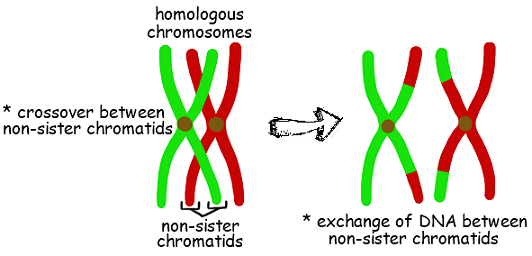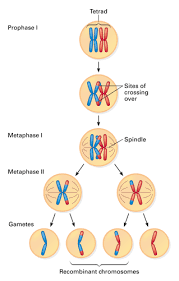Crossing Over :-
Crossing over is a mechanism by which a group of genes on one chromosome changes it’s place with a similar group on it’s homologous chromosome.

Term crossing over were first given by Morgan & Castle in 1912.
Mechanism of crossing over :-
Mechanism can be explained under the following steps –
1. Synapsis :-
The homologous chromosomes pair lengthwise due to a force of mutual attraction of prophase – I in meiotic division – I. The pairing starts at one or more points and proceeds along the whole length in Zipper fusion. The process of pairing is called synapsis. The paired homologous chromosomes are called Bivalents.
2. Duplication of chromosomes :-
Synapsis is followed by the duplication of chromosomes which changes the bivalent nature of chromosome to four stranded stage (Tetravalent). Four stranded stage of chromatids occurs due to splitting of homologous chromosomes into sister chromatids attached with unsplitted centromeres.
3. Crossing over :-
- In pachytene, non sister chromatids of homologous pair twist over each other due to action of enzyme endonuclease. The chromatids get connected with each other at points known as Chaismata.
- The crossing can take place at several points. The number of chaismata formed is proportional to the length of chromatids.
- The genes at distance loci undergo cross over but closely placed genes fail to cross over and exhibit the phenomenon of linkage.

Importance of Crossing Over :-
- This process provides an inexhaustible store of genetic variability in sexually reproducing organisms.
- Useful recombinations are used by plant and animal breeds, which produces useful traits in the progeny.
- This process produces new combination of genes (recombination).











